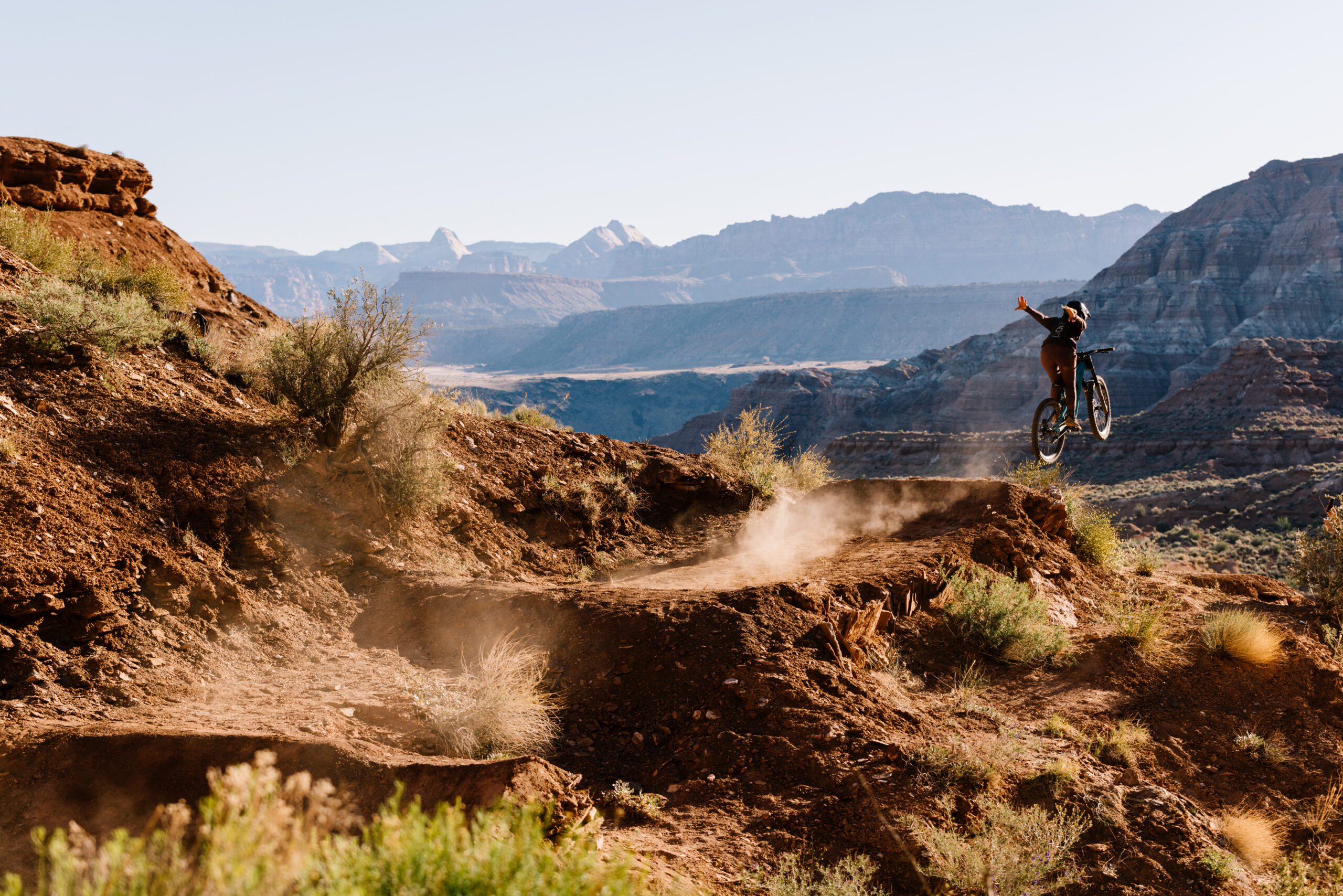Red Bull Formation pushes female freeriders into the mainstream.
Words Nicole Formosa Photography Katie Lozancich
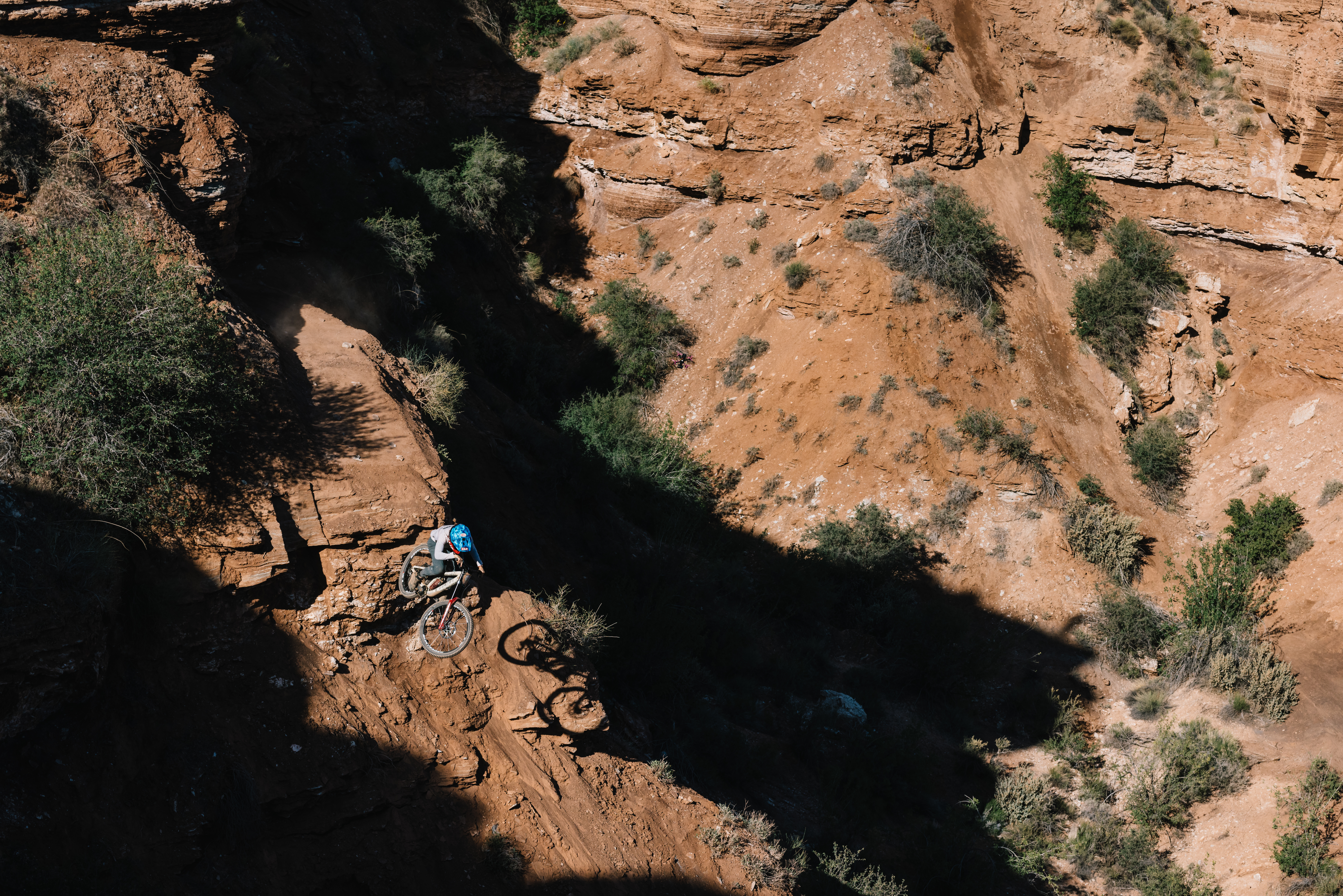
Katie Holden and I are peering up at an amphitheatre of rust-coloured cliff bands in the Utah desert as she points out the zones where 12 of the best female freeriders in the world will drop in over the next week. The lines span the entire ridge, and several trace the same routes made famous by Red Bull Rampage riders some seven years before. Metal tools clank against rock while athletes and their dig crews work feverishly to turn their stone canvases into the biggest and most consequential lines most of them have ever dropped into. The scale of it all is hard to fathom, even when you’re staring at the towering cliffs, but the tiny ant-sized humans perched on the rocks above – some roped in due to the sheer steepness – are a stark reminder of the gravity of Formation, the event we’re about to watch unfold. In the coming days these lines will take shape in the form of sketchy blind drop-ins from the wind-exposed ridgetop barely wide enough for a bike tyre, massive double drops, trick jumps, and steep, loose, full-commitment, fall-line chutes. Honestly, just thinking about riding this terrain is terrifying. Actually riding it? That’s reserved for the most talented, gutsiest mountain bikers on the planet.



Formative terrain
Just three years earlier, when Formation debuted at this same hallowed freeride venue outside Virgin, Utah, the first six invitees utilised just a portion of the site as they tested the waters of both a new event and their own perceived limitations on the bike. The terrain in this corner of south-west Utah is unlike anywhere else in the world – its raw, exposed nature demands experience, and the roll-in speed required to clean sections or features can be tricky, as it’s often much slower than the loose, seemingly traction-less ‘dirt’ might indicate. Indeed, as athletes spend more time in the desert, especially those who have taken part in all three Formations – Hannah Bergemann, Veronique Sandler, Vinny Armstrong and Vaea Verbeeck – the level of riding here has progressed exponentially, in step with the influence of the event itself. Formation has become the loftiest goal for women looking to build a career outside the race tape, and a catalyst for creating more opportunities for women within a niche of the sport that’s historically been occupied almost exclusively by men.
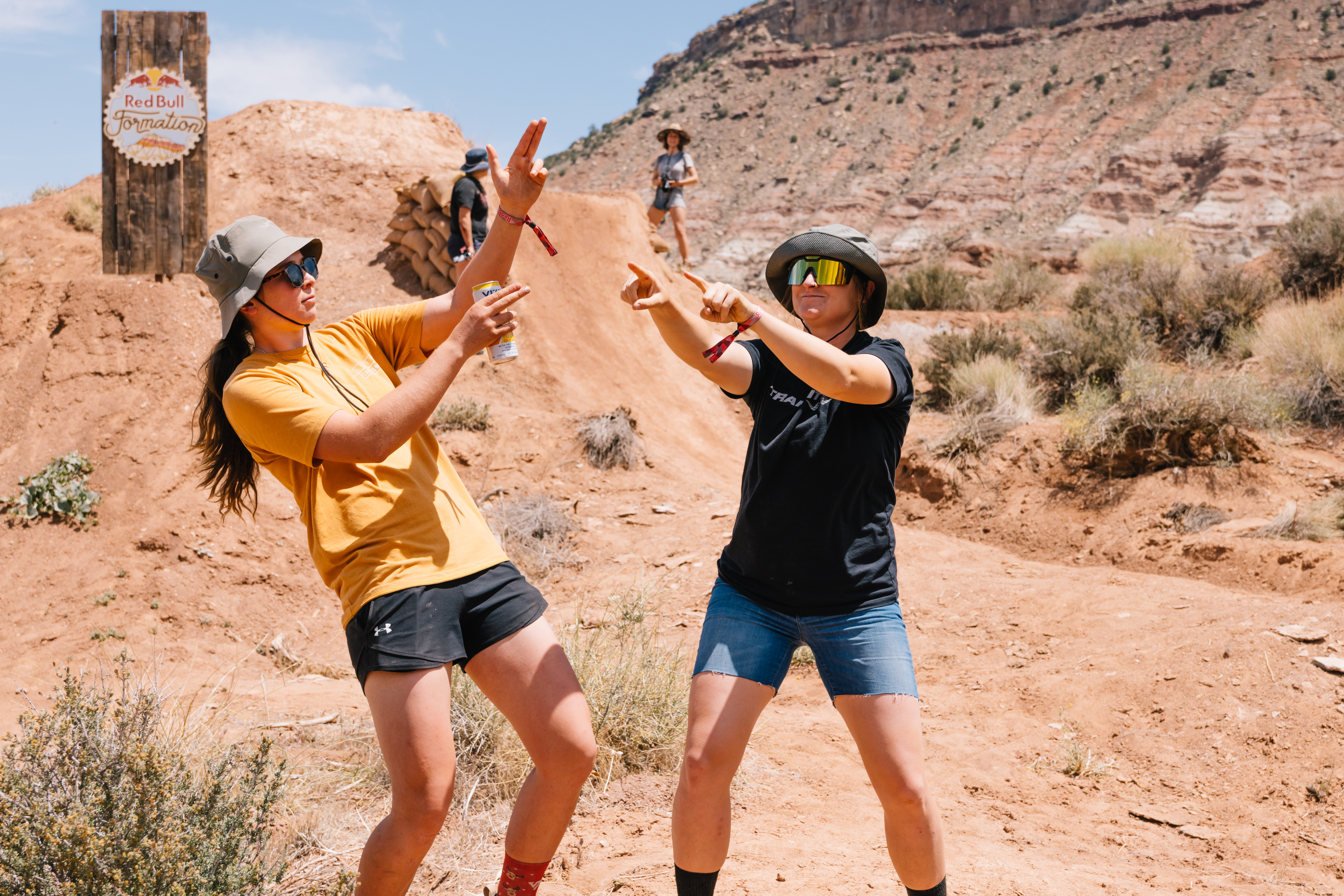
“One of the most telling things is the body language and confidence,” says Holden, a former freerider who dreamed up Formation, and worked with Red Bull to bring it to life in 2019. “It’s not that women couldn’t be here or weren’t allowed (in the past). But it was like we kind of had never carved out our space here so when folks showed up here, it was always like we’re kind of to the side. That opportunity wasn’t there. Now they’re spending time out here they know that this is their space, so now when they look at it they’re super-confident in the space. Because they’re like ‘I can do this, this is my space, this is what I want to do’. They’re in the driver’s seat now and they have that power.
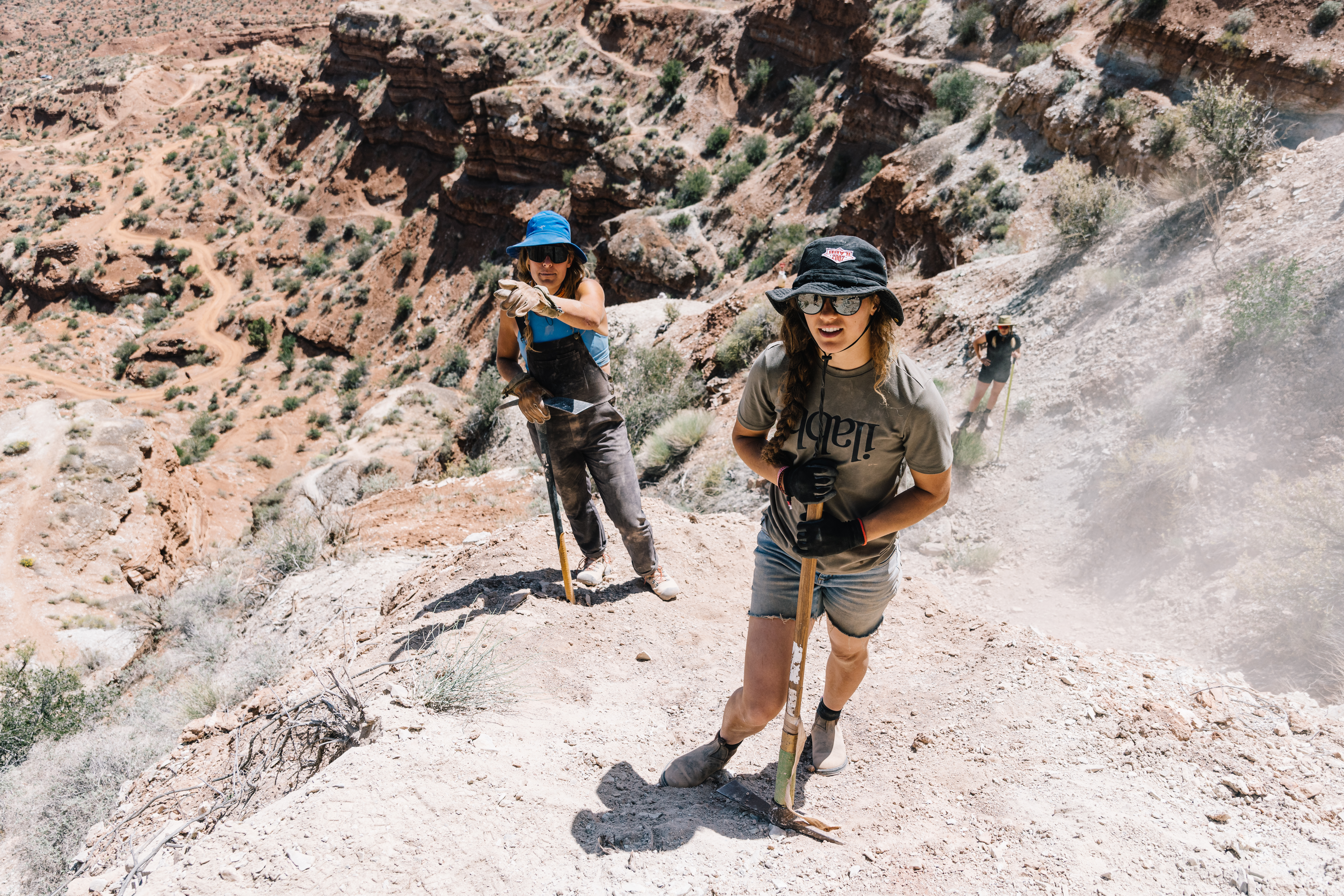
“The body language thing – that was the thing that stood out to me on the course walk day. It was unbelievable. The body language and the presence of the entire group, not just the 12 athletes, but even the builders who are out here for the very first time, seeing that confidence through the athletes and the builders who were here last year, like ‘This is our spot, we get to do this’.”
Camaraderie over competition
Formation is not a competition, and Holden doesn’t want it to become one. The format is designed around progression, not pressure. Athletes have three full days to create their lines, followed by a rest day, then another three days to session sections and features. The week culminates in two attempts to complete top-to-bottom runs on the final morning. On that day, riders are called in one by one off the ridgeline and the venue goes silent as tyres start to roll. While emotions on the ground might be heightened watching such high-consequence moves, for the women, the final drop-in serves as a test of focus, preparedness and mental fortitude.

By this time, most of them have guinea-pigged all the features of their lines and are aiming to string them altogether in a clean run – but given how much they are pushing the limits, crashes are inevitable. Harriet Burbidge-Smith was the first rider to drop in on the first runs of finals day, and after dropping in from the ridgeline, she tomahawked off a spine when a soft rut swallowed her front tyre, causing her to wash out. It was a terrifying start, as Burbidge-Smith and her bike tumbled over the edge and disappeared into a canyon below. After a few tense moments she got up and rode out, but was finished for the day. Vaea Verbeeck watched finals day on crutches after she crashed and tore ligaments in her knee on the landing of her huge ridgeline hip the day before – Rampage fans might recognise the feature from Andreu Lacondeguy’s second-place run in 2015. There were a few other close calls throughout the week, including Bergemann’s hard landing on the first attempt at a succession of three massive blind drops in the middle of her run.
The risks involved with riding this terrain are serious, and never far from riders’ minds.
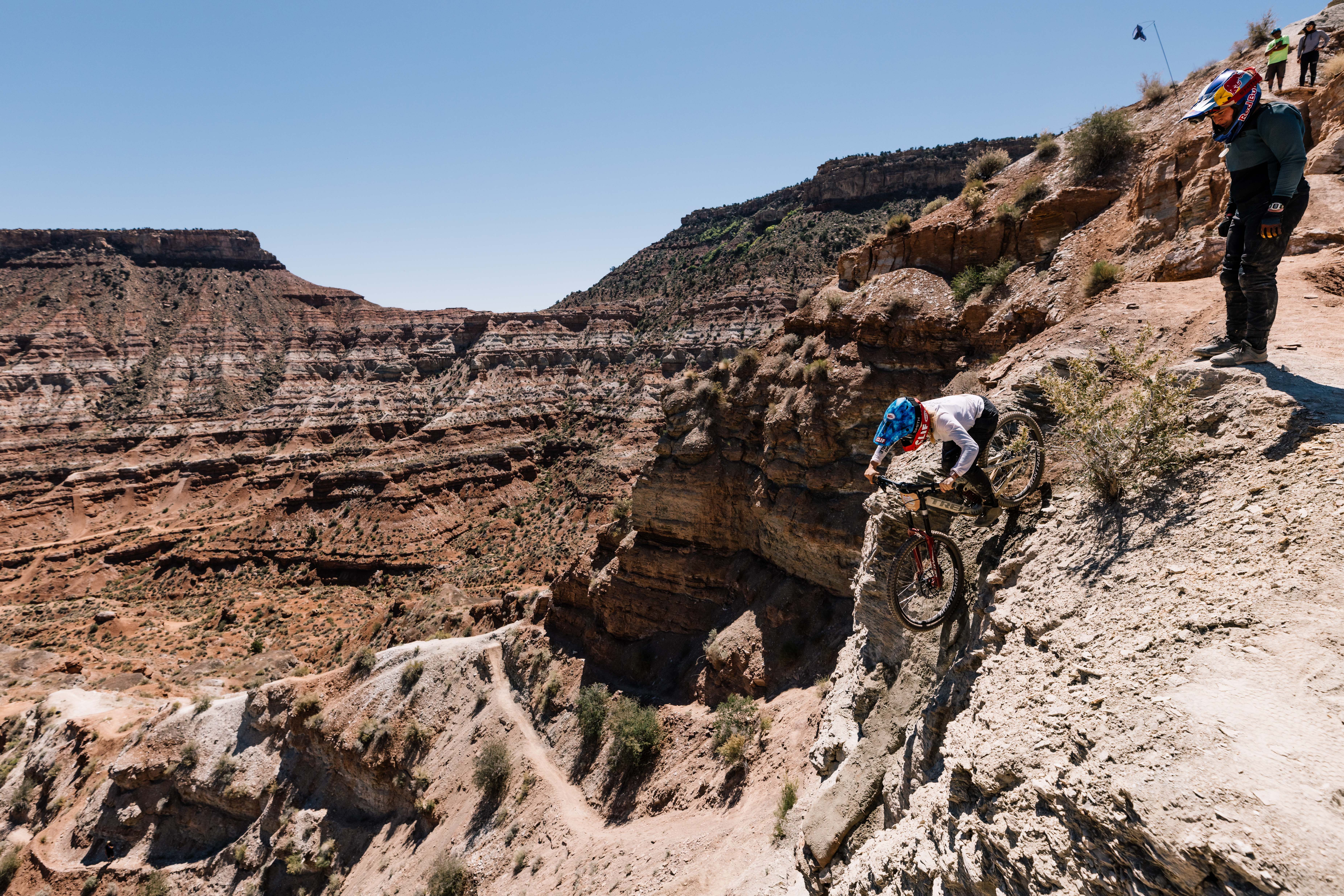
“That’s the scariest thing I’ve ever done,” said Casey Brown, after her final practice session when she cleaned the blind drop-in off the ridgeline she shared with Bergemann that plunged into a can’t-miss catch berm. “I’ve never been that puckered. You don’t know it goes until you’re in it. You can’t see until you’re fully committed. There’s nowhere to stop.” Brown returned the next day and rode the entirety of her line with a smoothness, confidence and style that proves why she’s among the best in the world.
While the finale and the media presence throughout the week add a layer of nerves that must be conquered, Formation is mostly about camaraderie and creating an environment that incubates successful female freeriders. Holden fears that if the ultimate goal was a podium and prize purse, the mentorship and spirit of togetherness that makes Formation special would suffer. But it has proven to be a launch pad for many of the riders and diggers involved. Notably, Bergemann came into the first Formation in 2019 as a relative unknown, stomped a huge line marked by a crux double drop on the face of the mountain, and essentially walked away with a pro-level career, a Red Bull helmet and later started Hangtime, her own women’s jump jam in her home town of Bellingham, Washington. True to form, at Formation 2022, Bergemann, together with Brown, resurrected Brett Rheeder’s 2015 Rampage line to create one of the most ambitious lines of the week. Bergemann was so happy when she cleaned the whole thing top to bottom on the final day of Formation that she shed a few tears in the athletes’ corral… “and I’m not an emotional person”.
Everyone’s a winner
In 2021, Kiwi Robin Goomes scored a last-minute invitation to join Formation as a digger and alternate, and made the career-changing decision to jump on a plane and fly to the US for the first time ever to dig in the desert. She went on to become the first woman to land a backflip in competition that summer at Crankworx Innsbruck, then was part of the first group of women to be invited to Audi Nines, where she won Best Trick for her backflip-can. Goomes was also among the first women invited to Darkfest in South Africa, a jam on one of the biggest jump lines in the world (yes, she hit the 90-footer). By the time she returned to Formation as an invited athlete in 2022, she had a list of sponsors and global support. This year in Utah, she upped her game again, throwing a huge suicide-no-hander, then backflipping the final trick jump, a Formation first. She continued on to Crankworx Innsbruck in June, where she won both Speed & Style and Whip-Off Champs.
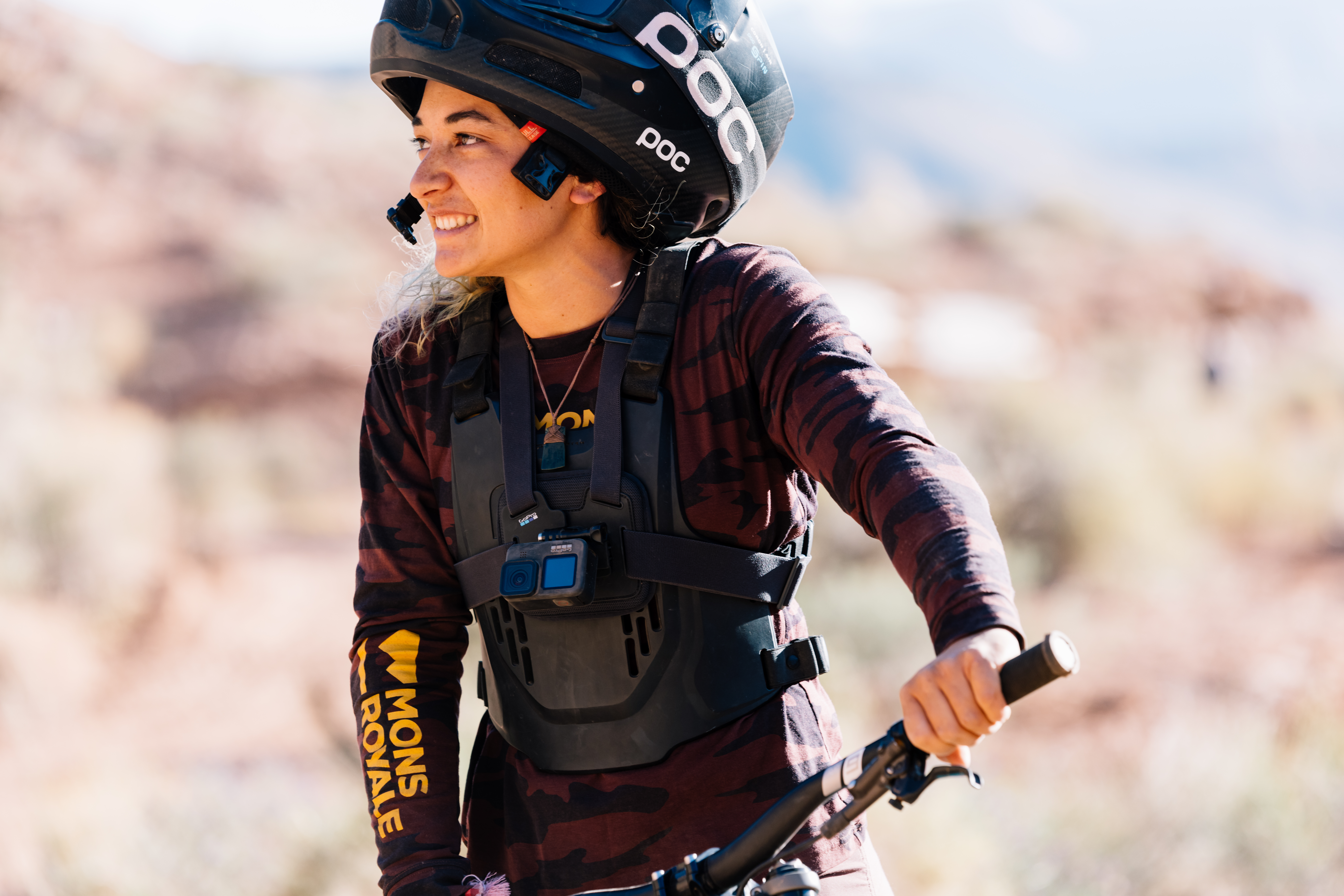
Goomes, who just a handful of years ago was enlisted in the New Zealand Army and racing downhill and enduros as a weekend warrior, is now one of the foremost freeriders in the sport. The visibility she has as an international athlete will show other women that racing isn’t the only way to have a competitive career in mountain biking. This is the point of Formation: to raise the profile of women in a male-dominated niche and to hopefully attract more dollars from the industry to support women who might not want to follow the traditional path of racing.
“Future Ground (a women’s progression event in New Zealand sponsored by Mons Royale) kind of made me go ‘Oh, freeride’s a thing’. It was there, but it didn’t seem accessible for women,” Goomes said. “Future Ground did something cool, then Formation was happening. Even then, while that was happening, I was like, ‘I don’t know how to get to Formation. I’m not good enough. I don’t know what the process is to get from here to there.’ It seemed too far away.”
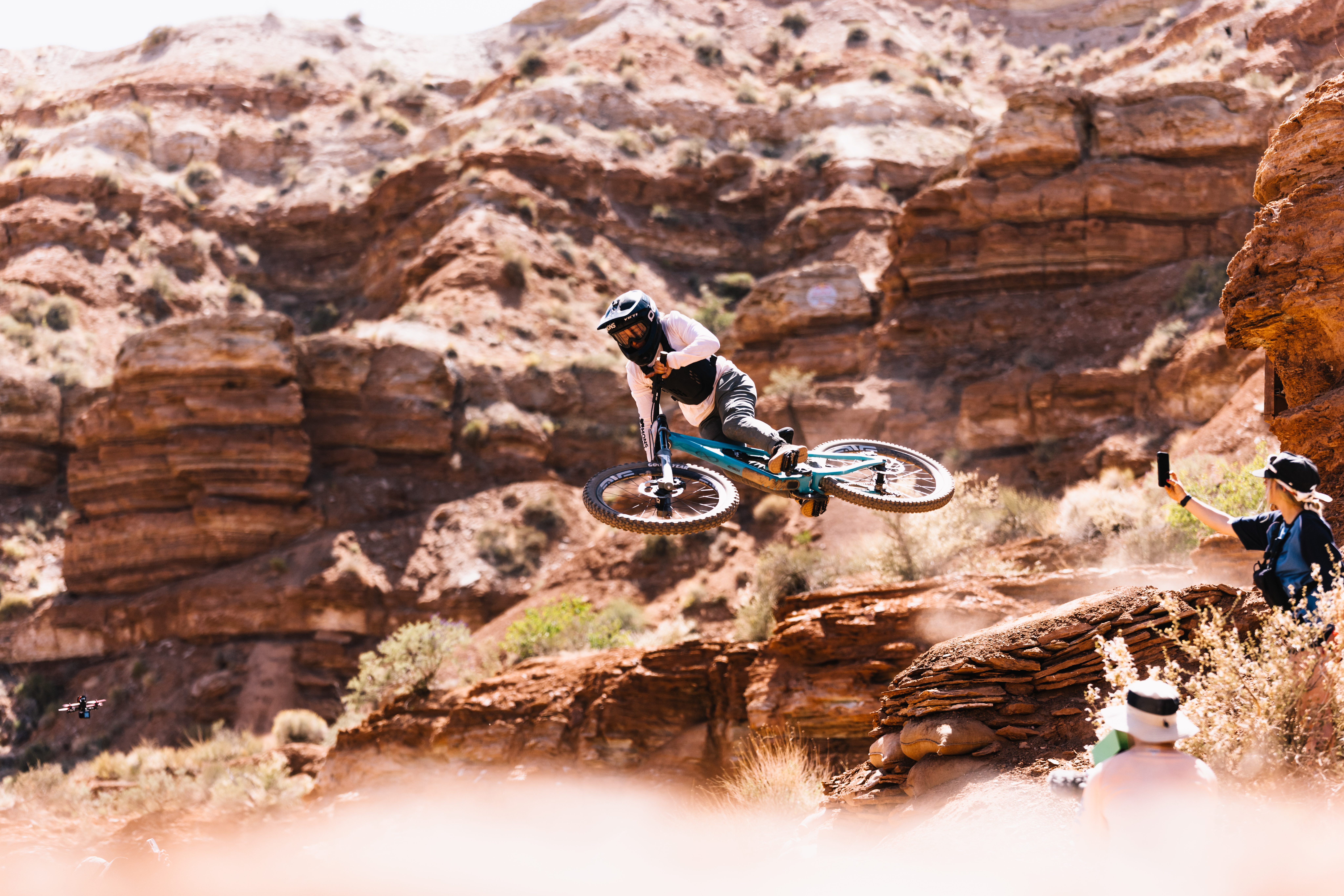
That’s exactly what Holden is trying to change. As such, Formation is small by intention so the focus stays squarely on the athletes. Sponsorship opportunities are limited, industry brand presence is next to nil and the venue is on a closed course without spectators (unlike Red Bull Rampage, which has a dozen partners and sells general admission tickets to the public). “I hope the support comes in other ways,” Holden says, like through bike brands signing more women, then financially supporting their own events or film projects.
The idea isn’t that a rider ‘wins’ Formation, it’s that the athletes ‘graduate’ from Formation, and go on to participate on a larger stage at events like Crankworx, Audi Nines, Proving Grounds, the Fest Series or the biggest stage of them all: Rampage, the elephant in the room at Formation. Rampage is held on the same Utah cliffs and for 21 years has represented the pinnacle of freeride, with invitations reserved for the top 15 or 21 best big-mountain riders in the world. A woman has never made the cut – some like Brown and Holden have been vocal about wanting to, and those comments sparked the creation of Proving Grounds, which started as a Rampage qualifier (although it no longer serves that purpose) – and many are hoping that changes. With the incredibly high level of riding on display at Formation this year, it certainly seems reasonable that women would now be part of the conversation. They are, after all, riding the same lines the men did in 2014 and 2015, and not tamed-down versions.
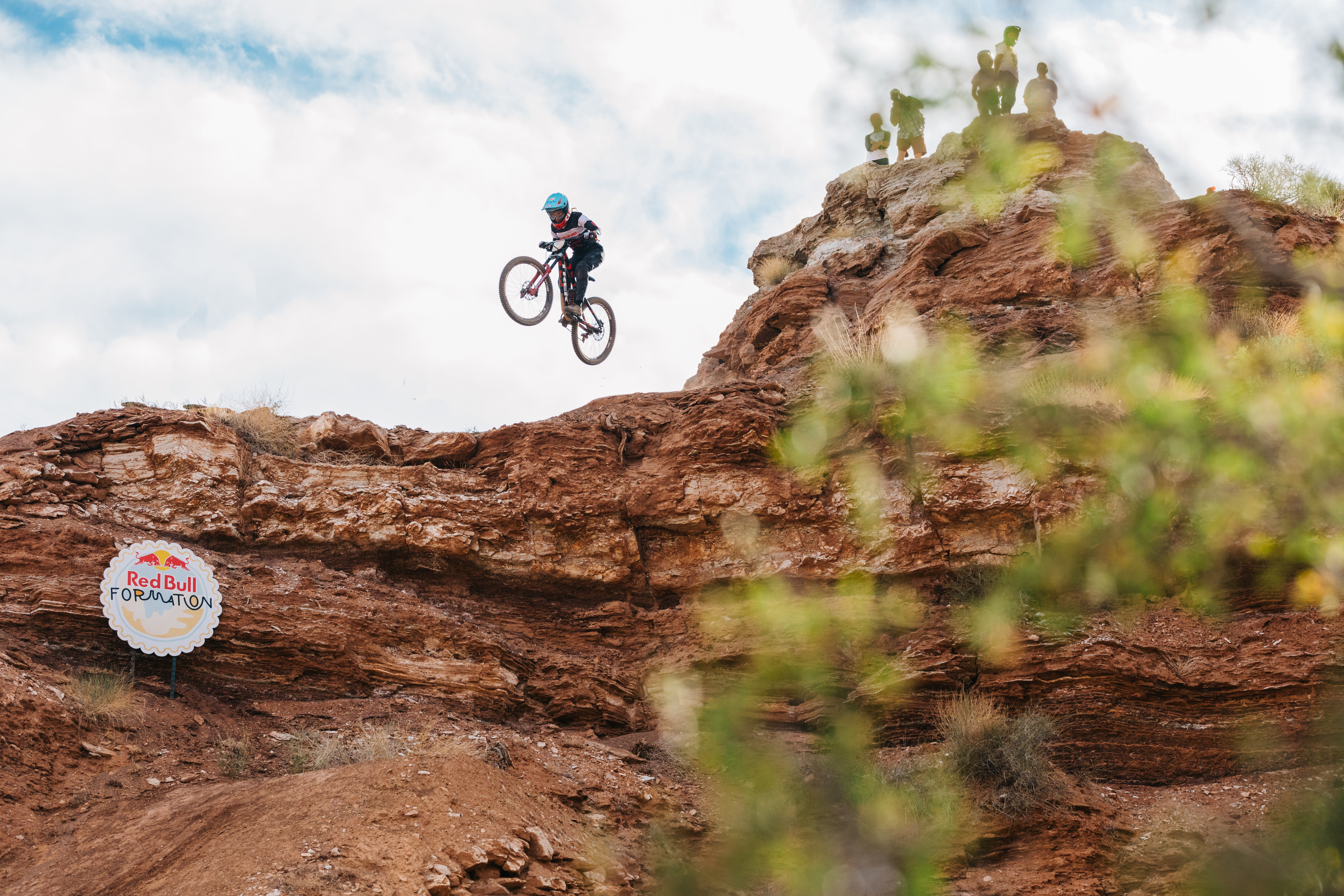
“We need a women’s category at Rampage,” said Claire Buchar, a pioneer in freeride and coach who helped dig and support the women at Formation, some of whom she’s known nearly their entire riding lives, as we spoke during a practice day in the desert. Formation should remain insulated from competition, she believes, because it serves as an important primer in how to deal with factors like media pressure or how to get into the right headspace for an event with as much gravity as Formation or Rampage.
Equal elevation
While competing at Rampage is a goal for some of the women, preparing them to potentially participate in it is only a fraction of the Formation equation. It’s also about bringing in women who can take inspiration from the week back to their own communities. And it’s not just the headlining athletes Formation is aiming to elevate – almost everyone involved in the event is a woman – diggers, media and support staff. Each of the 12 athletes can bring one digger of her choice, then Red Bull invites a broader pool of up-and-coming athletes to serve as floaters, helping build lines around the venue. They all share a house together for the week of the event, eat all their meals together and hang out on rest days. It creates an environment conducive to mentorship between athletes and diggers and beyond. For the rising riders, meeting and connecting with female photographers and filmers who can team up on future content projects is a huge benefit facilitated by Formation. Many of the diggers ride the lines they worked on the week after Formation wraps, having gained valuable confidence from watching the athletes drop in, which helps them push forward their own goals.
“Realistically, not all of those folks are going to be in Formation someday, but they all have their own strength and power, and can go back into their communities and continue to carve out space and opportunity for all,” Holden says. “Renata [Wiese Peña] is from Chile. Her specialty is not necessarily freeride, more dirt jumping. She went back home after Formation last year and created all these events, she’s growing that space so much. Now Paula [Jara], also from Chile, is from the big mountain side. The two of them together can create a groundswell of women in that space and we’re going to see a lot of talent coming from Chile.”
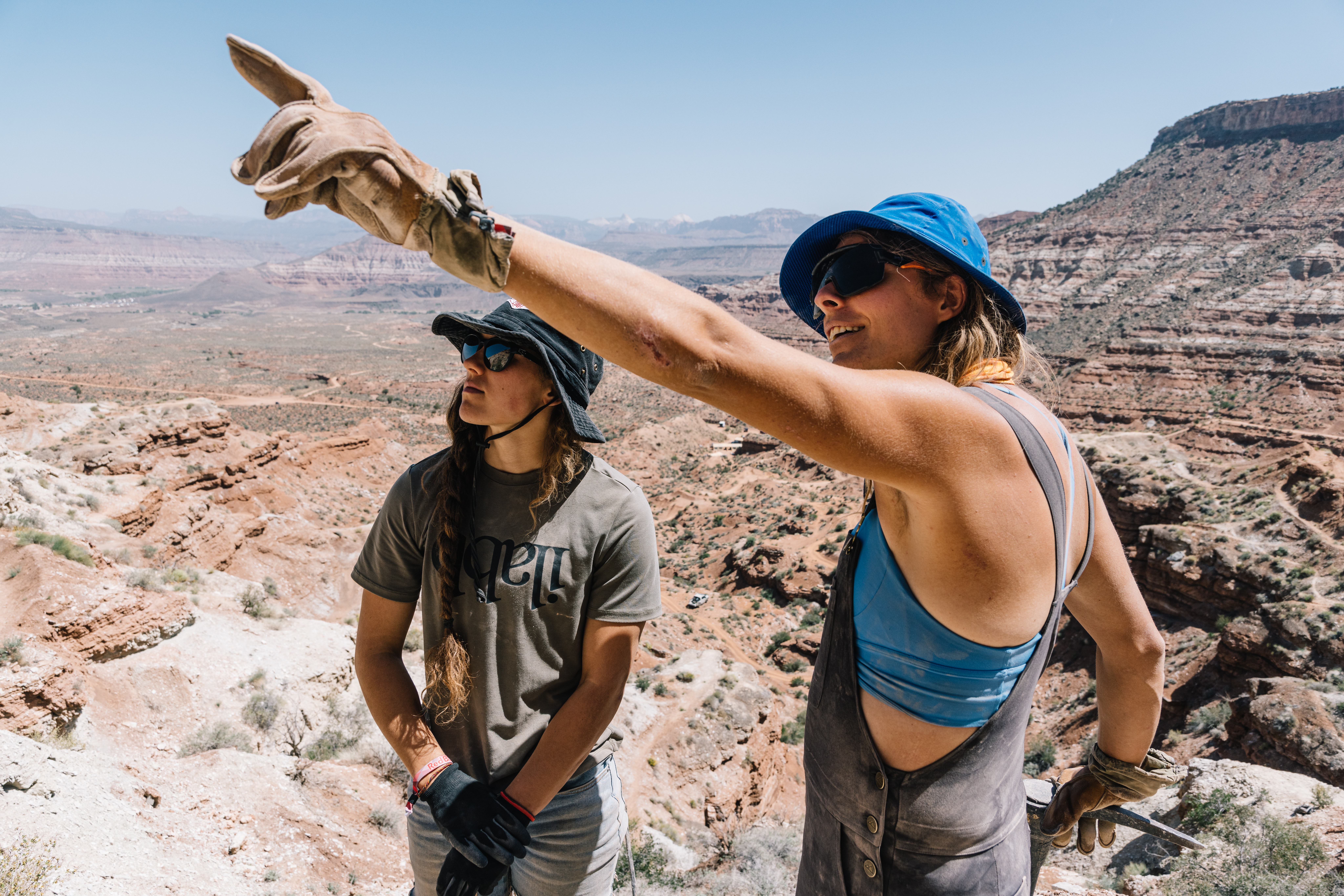
Alex Showerman is an aspiring freerider who was invited to dig at Formation for the first time this year, and paired up with Louise Ferguson, a first-time invited athlete. Ferguson, a native of Fort William, Scotland, now living in New Zealand, had never seen terrain anywhere close to that of Virgin, Utah, when she arrived in the US and the two newcomers quickly bonded. For Showerman, who hopes to one day ride at Formation, witnessing Ferguson methodically break down her line created a mental map that can be a guide in her own riding.
“It’s really helpful with understanding the mindset of stepping into this terrain,” Showerman said. “I’m really grateful to have worked with her and to see her as a first-time athlete work through this because that’s really helpful for me to see. OK, take this really big overwhelming thing and break it down.”
Formation is young, and it will undoubtedly evolve and change – Holden would like to keep it capped at 12 athletes to ensure the group doesn’t become too fractured, endangering the camaraderie that has made it so successful, and she’s also firm on it staying about progression, not competition. More sponsorship, however, seems inevitable given the prominence and influence of the event. This year, brand presence was minimal. Besides Red Bull, Industry Nine provided a cash prize that was shared equally among all the riders and Wild Rye sponsored the media tent. SRAM had a tech person on site to help tune suspension, and a Trek social media manager created content around its athletes. But building in a sponsorship programme just hasn’t been a big priority as Formation has grown through its infancy toward toddlerhood. Now with its foundational bricks laid and the concept proven, that may change. One thing is certain – the athletes will always remain at the core of Formation, and if all keeps going according to Holden’s plans, transcend it.
“This year, I feel like the women cemented their place; they’re for real, they’re some of the best athletes out there, and the industry needs to pay attention and make space for them,” Holden said.

Story tags
